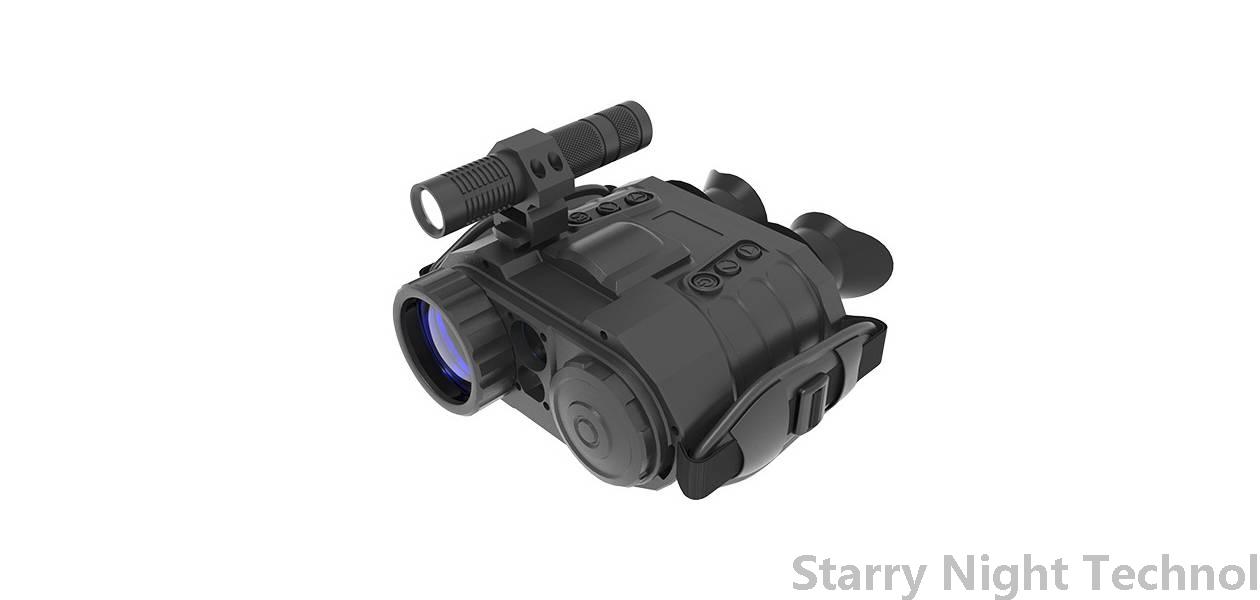Military Technology Enhanced Night Vision Gear for Maximum Performance
1725433211000

In the modern battlefield, where concealment and the element of surprise can dictate the outcome of an engagement, advanced technology plays a pivotal role in ensuring that armed forces maintain operational superiority. Among the most critical advancements in military technology are enhancements to night vision gear. Night vision equipment today embodies cutting-edge innovation, enabling soldiers to navigate and operate effectively under low-light conditions, ultimately maximizing their performance in combat.
### The Evolution of Night Vision Technology
Night vision technology has come a long way since its inception during World War II when the first rudimentary devices were developed. Early forms of night vision relied on ambient light amplification, primarily in the form of Generation 0 devices. These devices were bulky and offered limited performance; however, they paved the way for future advancements.
Today’s night vision systems are typically categorized into multiple generations, with Generation 3 and 4 equipment being widely regarded for their advanced capabilities. Generation 3 (Gen 3) devices utilize a gallium arsenide photocathode, which significantly enhances light-gathering ability, providing improved clarity and range. Gen 4 devices take this technology further with the addition of an “filmless” enhancement that increases resolution overall while reducing the noise present in the image.
### The Components of Modern Night Vision Gear
Modern night vision gear is comprised of several components designed to work harmoniously to achieve optimal performance. These include:
1. **Image Intensifiers**: The heart of night vision gear, image intensifiers convert low levels of light into a visible image. Advancements in microchannel plate technology allow for higher sensitivity and better resolution, offering users a clearer and more detailed view of their surroundings.
2. **Thermal Imaging**: Unlike traditional night vision, which relies on visible light, thermal imaging detects heat signatures emitted by objects and living beings. This capability allows soldiers to “see” in complete darkness and through environmental obstacles like smoke, fog, or foliage, making it an invaluable tool for reconnaissance and target acquisition.
3. **Digital Night Vision**: Digital night vision diverges from traditional analog systems, utilizing advanced sensors and algorithms to capture images. Its integration with wireless communication allows for real-time data sharing among troops, enhancing situational awareness during operations.
4. **Augmented Reality (AR)**: The incorporation of AR technology is beginning to transform night vision applications. Overlaying digital information upon the operator's field of view can provide real-time data, mapping, and tactical information, enabling greater decision-making capability under pressure.
### Enhancements in Performance
 - **Increased Range and Clarity**: With breakthroughs in lens and sensor technology, current night vision devices provide extraordinary clarity at extended ranges. This allows soldiers to identify potential threats and targets well before they are detected.
- **Increased Range and Clarity**: With breakthroughs in lens and sensor technology, current night vision devices provide extraordinary clarity at extended ranges. This allows soldiers to identify potential threats and targets well before they are detected.- **Low Light Level Performance**: Advanced night vision gear is designed to function in extremely low light, allowing soldiers to operate in twilight conditions without the need for artificial illumination.
- **Improved Durability and Field Compatibility**: Military-grade night vision devices are built to withstand harsh environmental conditions. Enhanced durability ensures reliable performance in diverse environments, from arid deserts to wet jungles.
- **User-Friendly Interfaces**: Modern night vision gear is increasingly designed with the end-user in mind. Intuitive controls and integration with other military systems mean that soldiers can transition between combat modes effortlessly, ensuring agility and operational efficiency.
### The Role of Artificial Intelligence
The integration of artificial intelligence (AI) in night vision technology represents a major leap forward. AI enhances image processing capabilities, allowing for real-time enhancements of low-light images. With machine learning algorithms, AI can distinguish between friend or foe, improving target identification and reducing the risk of engagement errors. This can be especially important in complex environments where threats may be obscured or camouflaged.
### Physiological and Psychological Effects
Beyond technological advancements, the design of night vision gear also shifts towards improving user comfort and reducing fatigue. With the prolonged use of night vision devices, soldiers can often experience strain in their eyes, leading to decreased performance over time. New materials and ergonomic designs aim to counteract these issues, ensuring that soldiers can maintain focus and attention levels throughout extended operations.
Furthermore, psychological benefits arise from improved confidence levels conferred by effective night vision capabilities. Psychological readiness is a critical component in modern warfare, and knowing that equipment provides a decisive advantage enhances troops' mental resilience in high-pressure situations.
### Future Developments
As we move further into the 21st century, the expectation is that the evolution of night vision technology will continue to unveil revolutionary enhancements, such as fully integrated multi-spectral systems that combine optical, thermal, and digital night vision capabilities into one device. Research into miniaturization and advanced battery technologies can improve portability and operational time, particularly vital in special operations.
In conclusion, military technology enhanced night vision gear epitomizes the balance between innovation and practicality. Through constant advancements, soldiers have access to sophisticated tools enabling them to operate optimally in darkness, ensuring that they are equipped to face the complexities of modern warfare. As technology continues to evolve, the battlefield effectiveness and safety of armed forces will remain significantly augmented by the ongoing development of night vision capabilities.
Night vision device accessoriesStarry Night Technol

